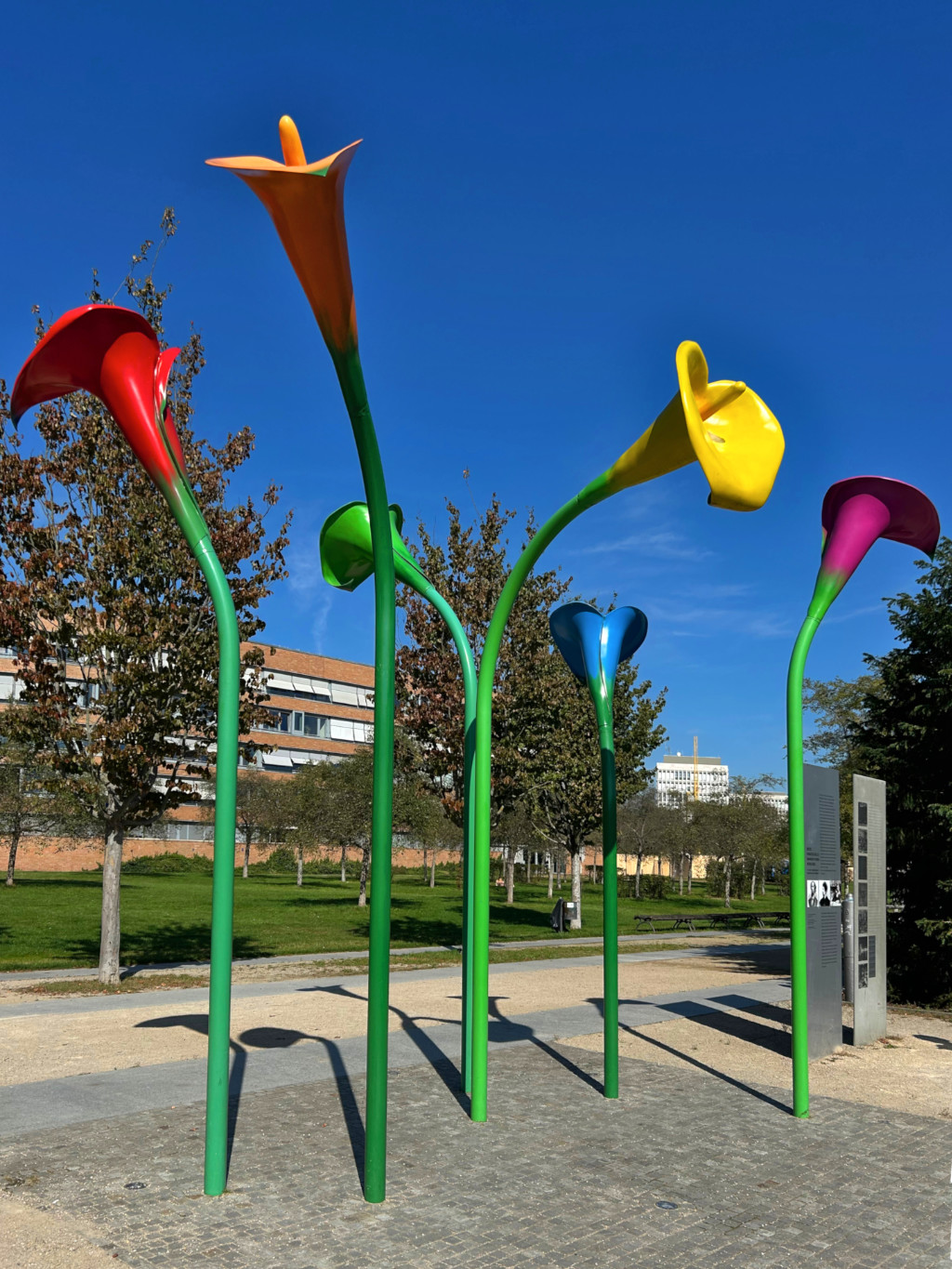
The first LGBT organization in the world was founded in Berlin. It no longer exists, but it has a colorful memorial close to the parliament
Over seven decades before the Stonewall riots, Berlin was the birth place for the first LGBT rights organization in the world.
The Wissenschaftlich-humanitäres Komitee (Scientific-Humanitarian Committee) was founded in 1897 in Berlin by physician Magnus Hirschfeld. The committe was an attempt to stop the persecution of gays and for the recognition of gays, lesbians and transgender people by society.
Magnus Hirschfeld was the head of the Institut für Sexualwissenschaft (Institute for Sexual Research), where he researched gender and sexuality. Hirschfeld was gay himself and through his research he discovered that gender is not binary and that transgender is an innate characteristic.
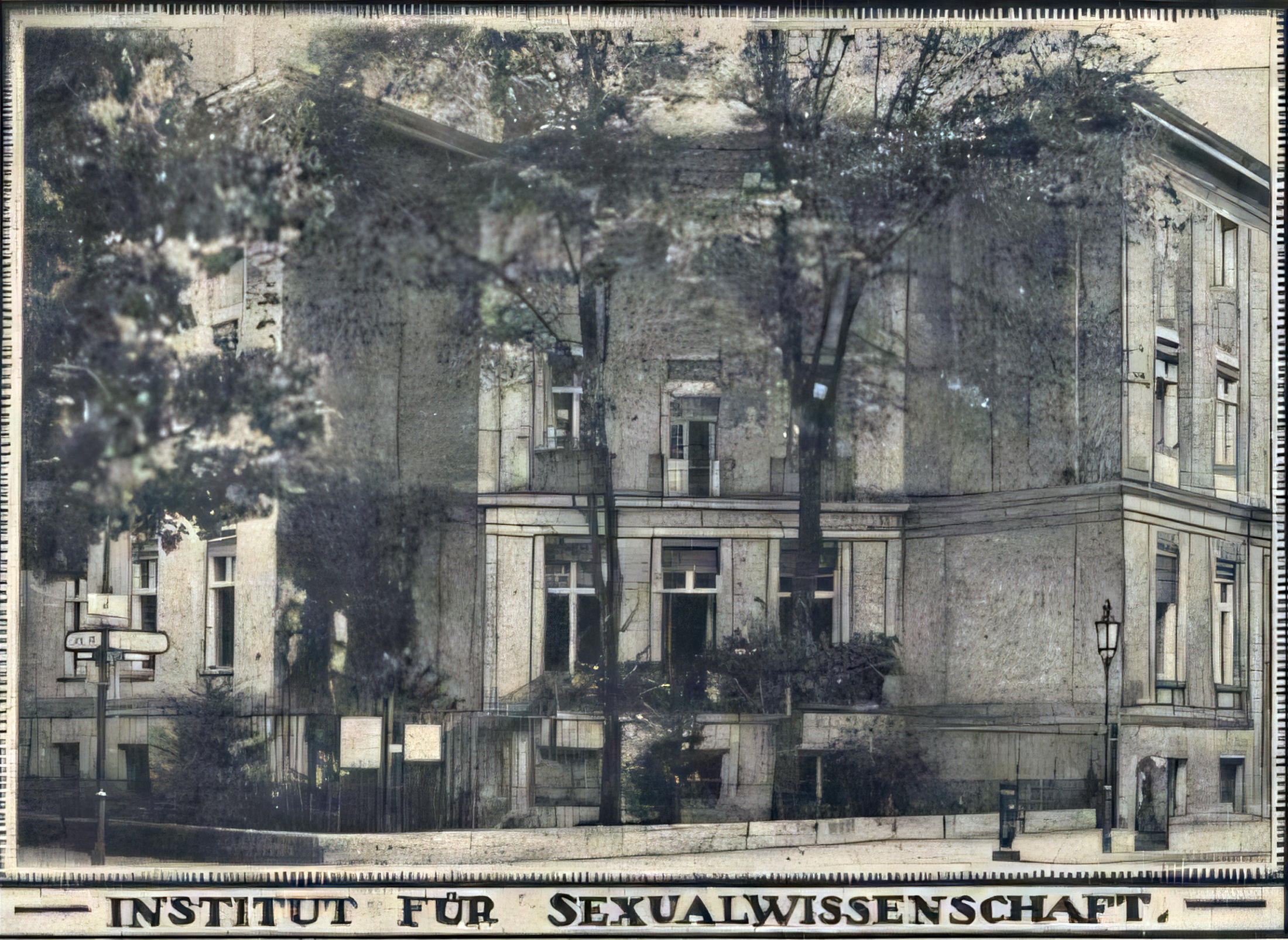
The committee’s motto was Per scientiam ad justitiam, or “through science to justice”, and it used Hirschfeld’s research to influence the German authorities.
The primary focus of the Wissenschaftlich-humanitäres Komitee was the infamous Paragraph 175 of the Penal Code, which prohibited male prostitution and men from having sexual intercourse with each other.
The committee used science to argue that the paragraph should be repealed because homosexuality was neither a disease nor moral decay.
The Wissenschaftlich-humanitäres Komitee also published pamphlets for sex education – including a brochure entitled Was soll das Volk vom dritten Geschlecht wissen? or “What should people know about the third gender?”.
The third gender refers to transvestites, as Magnus Hirschfeld named the people who behaved and dressed as the opposite sex – what we today call transgender people.
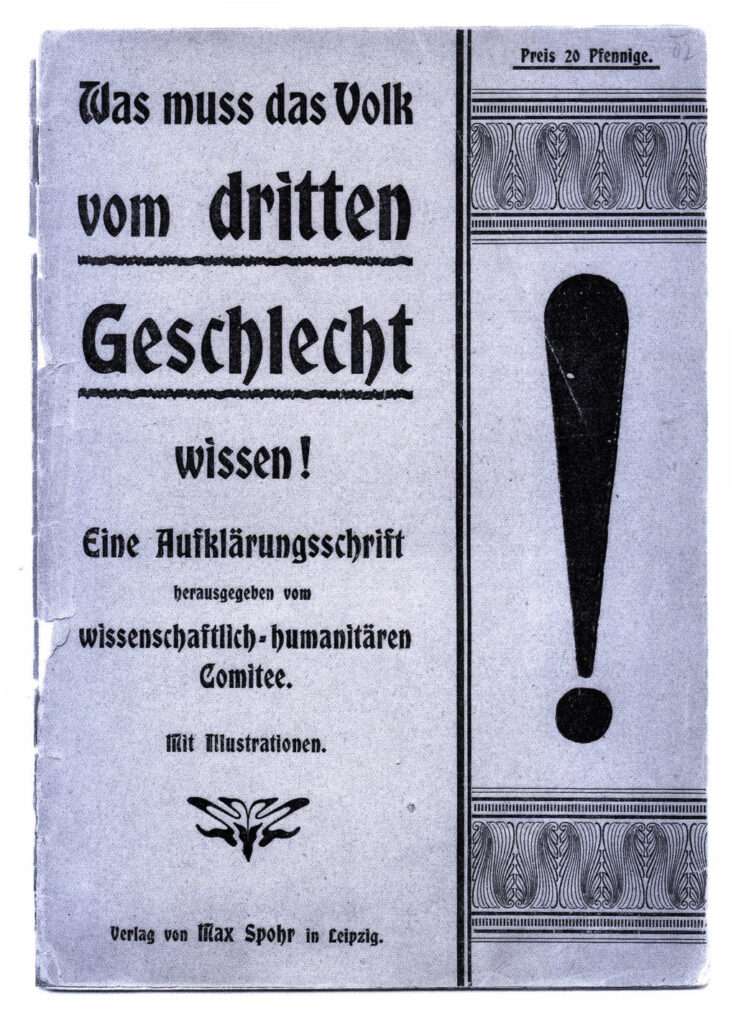
At its peak, the committee had more than 700 members in branches across Germany, Austria and the Netherlands. The Wissenschaftlich-humanitäres Komitee was dissolved in June 1933, five months after Hitler came to power in Germany.
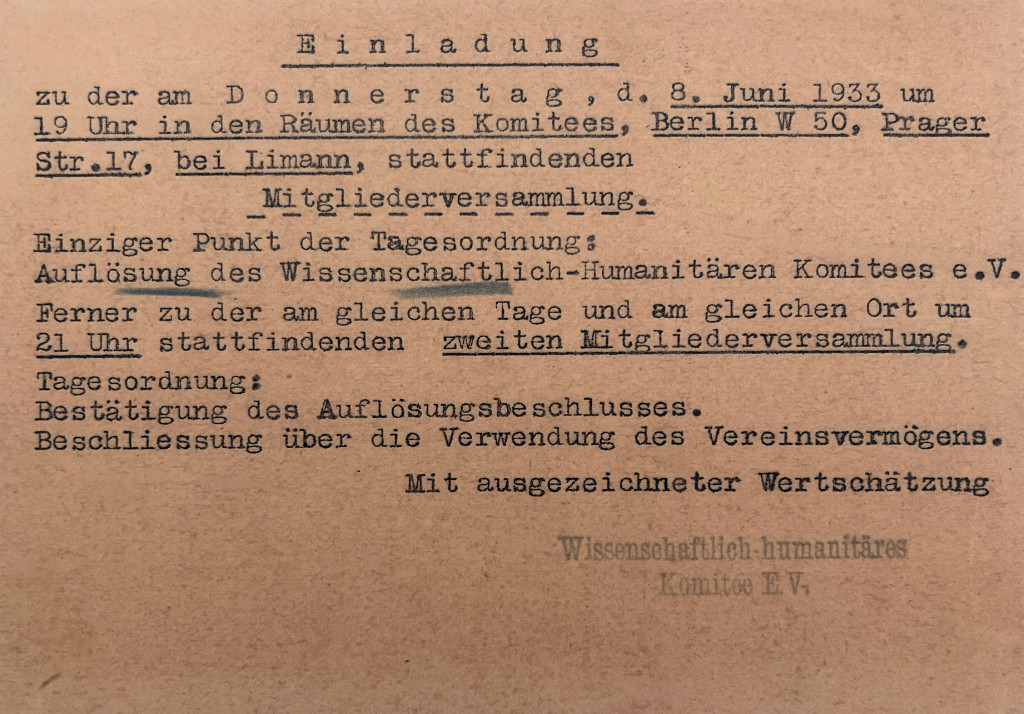
Hitler and the Nazis believed that homosexuality was a Jewish conspiracy, and Berlin’s LGBT community was forcibly shut down, with many arrested and sent to concentration camps. Hirschfeld, himself Jewish, fled to Paris and died of a heart attack on his birthday in 1935.
The memorial to the Wissenschaftlich-humanitäres Komitee is located along the river Spree. The Institut für Sexualwissenschaft was located on the opposite bank of the river on the corner of In den Zelten and Beethovenstraße. The villa was destroyed during the air strikes in November 1944 and the address no longer exists.
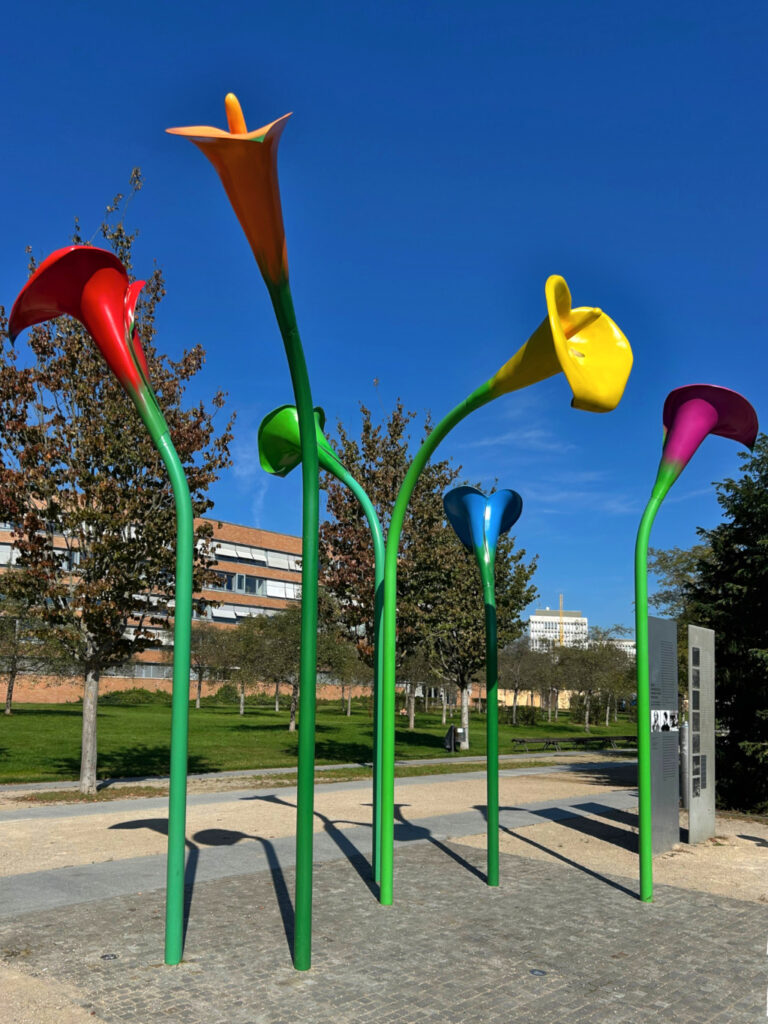
Photo by Chrissie Sternschnuppe@Flickr. CC BY-SA
The memorial to the First Homosexual Emancipation Movement was erected in 2017 and consists of six calla lilies in each of the colors of the Pride rainbow. A calla lily has the special property that one plant consist of both male and female flowers, and thus the memorial symbolizes both gender and sexuality in nature.
There are also two boards that tell the story of the Wissenschaftlich-humanitäres Komitee and the people, besides Magnus Hirschfeld, who founded the first LGBT organization in the world.
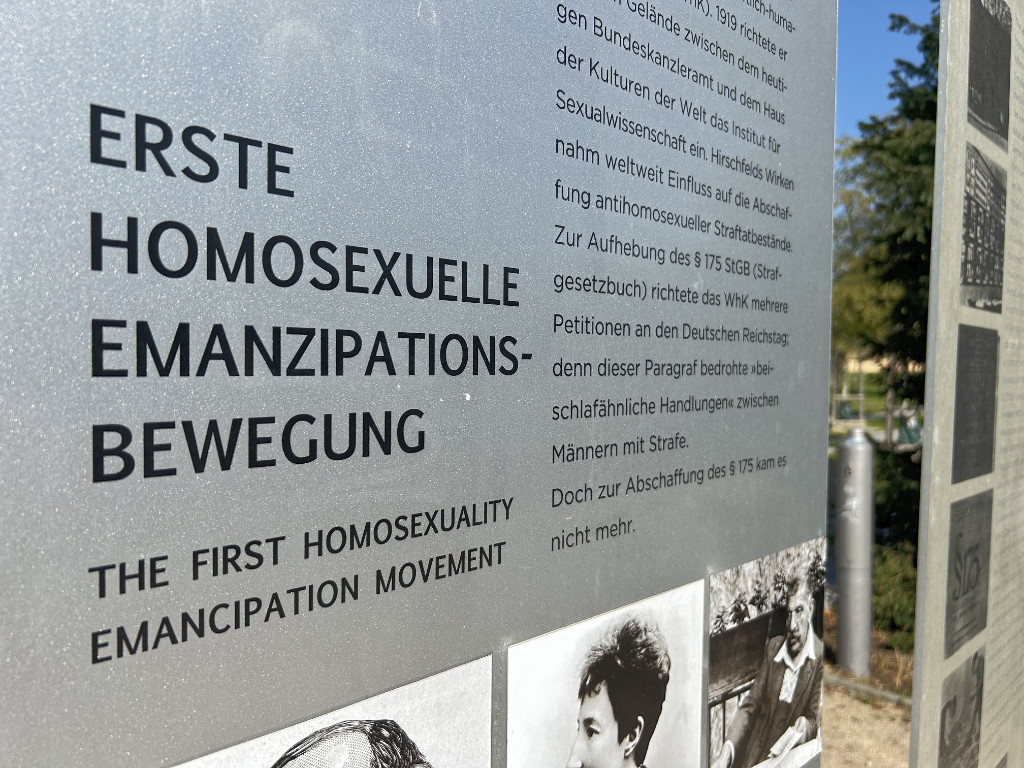
Where:
Along Magnus-Hirschfeld-Ufer in Berlin-Mitte not far from the Reichstag.
Family friendly: Yes
Price: Free

Leave a Reply